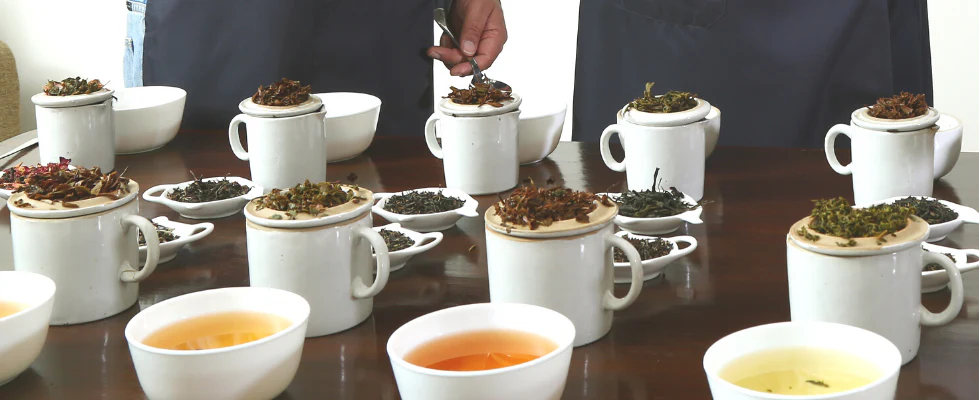For centuries, tea has been more than just a beverage—it’s been an art, a cultural ritual, and an avenue for relaxation and reflection. Discerning the subtle differences in taste, aroma, and appearance of various teas is an acquired skill akin to wine tasting. In this comprehensive guide, we will delve into the delightful world of tea tasting and offer insights on how to appreciate the nuances of this timeless drink.
Understanding the Basics of Tea Tasting
Tea tasting is an intricate process that requires sensory engagement. To fully appreciate the complexity of different teas, one needs to be familiar with the four main sensory aspects: appearance, aroma, flavour, and mouthfeel. The visual appeal of the tea leaves, both dry and steeped, the scent that they emit upon brewing, the taste notes that a sip reveals, and the tactile sensation on the palate all contribute to the overall tea experience.
Tuning In to Your Senses
The first step in tea tasting is clearing your palate to ensure that you can discern the tea’s true flavour. Then, observe the tea leaves: their size, shape, and colour can often indicate the tea’s quality and unique characteristics. Next, inhale deeply to take in the aroma released by the brewed tea, which can range from floral and herbaceous to earthy and smoky.
Exploring the Flavour Profile
As you take your first sip, let the tea wash over various parts of your tongue. Sweetness is often detected first, followed by bitterness, sourness, and finally the umami sensation. Identifying these flavours and their balance is essential in tea tasting. A good tea should have a harmonious blend, with none of the flavours overpowering the others.
Noticing the Mouthfeel and Aftertaste
After swallowing, pay attention to the mouthfeel. Is it smooth, creamy, astringent, or perhaps brisk? A quality tea will usually leave a pleasant and lasting aftertaste—a lingering flavour profile that evolves even after the tea is consumed.
Now that we’ve covered the essentials of tea tasting, let’s explore how these principles apply to some specific types of teas. Japanese green tea, for example, is renowned for its rich history and distinct flavour profiles.
Delving into Japanese Green Tea
Japanese green tea is an embodiment of Japan’s heritage and attention to detail. One distinguishes between different types, such as Sencha, Gyokuro, and Matcha, by observing their unique qualities. Sencha, the most common variety, often has a balance of sweetness and umami, while Gyokuro is celebrated for its rich umami flavour due to being grown in the shade. Matcha, a powdered form of green tea, stands out for its vibrant colour and profound taste.
When engaging in the tea tasting of Japanese green tea, look for the bright verdant hue of the brew, which typically signals high quality. The aroma should ideally be fresh and grassy, indicative of a well-preserved product. In the tasting phase, aside from the initial flavours, you may also note underlying hints of seaweed or a subtle nuttiness depending on the tea.
Experiencing Ceremonial Grade Tea
For a truly immersive experience, consider tasting ceremonial grade matcha. As the pinnacle of Japanese green teas, ceremonial grade matcha is intended for traditional Japanese tea ceremonies and is characterised by its fine texture, intense colour, and superior flavour. Unlike other teas, matcha is whisked rather than steeped, forming a frothy texture that presents an entirely different mouthfeel.
Ceremonial grade matcha is delicate and should have a smooth, creamy body, without any clumps or granularity. The taste should be complex, rich in umami, and have a sweet aftertaste void of any excessive bitterness, a sign of its premium quality.
Finding Quality Tea for Tasting
Finding the right source for your tea tasting journey is essential. A reliable supplier like IKKYU provides a wide range of high-quality teas to explore. They offer not only different types of green tea but also various grades that cater to both casual consumption and special occasions.
Hosting or Participating in Tea Tasting Events
To deepen your understanding and enjoyment of teas, participating in organised tea tasting events can be very beneficial. In these settings, experts guide you through the nuances of each tea, often providing valuable insights into growing regions, processing techniques, and brewing methods. It’s an enriching experience that allows you to share your passion with fellow tea enthusiasts.
Final Thoughts
Tea tasting is an art that reveals the intricate shades of flavour and history behind each cup. Whether you’re a seasoned tea connoisseur or a curious newcomer, the world of tea beckons with its diversity and complexity. By engaging your senses and exploring teas from reputable sources like IKKYU, you can embark on a gastronomic voyage that promises both tranquillity and excitement.
In conclusion, enjoy the process of discovery that tea tasting provides. With each sip, you learn more about the cultures that have cherished these leaves for generations and develop a deeper appreciation for the subtleties that make each tea unique. So brew a cup, take a moment, and savour the experience that each infusion has to offer.



































